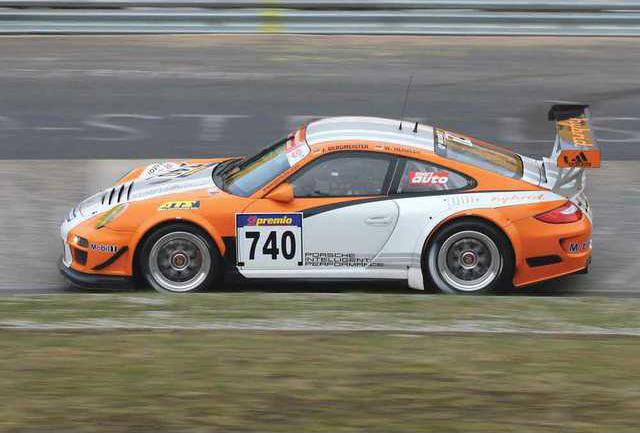Electric engines and racing are not two subjects which, historically, have had anything in common.
Thanks to the efforts of the Porsche automobile company, that is slowly changing.
In January of 2009, the company decided to create a division with the goal of engineering a race car that could compete internationally and feature the newest in hybrid technology. This occurred more than 100 years after Ferdinand Porsche created what is credited as the first hybrid car, the Lohner-Porsche.
As of April 2010, the company saw that goal come to fruition when the Porsche 911 GT3 R Hybrid made its debut at a six-hour event at the Nurburgring motorsports complex in Nurburg, Germany.
The car ran so well the team was back in Nurburgring the following month to compete in the 24 Hours of Nurburgring.
The efforts of the Porsche company gained worldwide acclaim at the event, where the hybrid led the overall classification for more than eight of its 22 hours and 15 minutes on the track.
The only reason the car didn’t finish the race? A failure in one of the combustion engines.
Dr. Daniel Armbruster, the Manager of Motorsport Development and Systems for Porsche Motorsport, has overseen the creation and testing of the new hybrid and said that the system has performed very well.
“Most of the problems which we have had are in the combustion engine, not the electric components,” he said.
Armbruster stated that the hybrid project is not only focused on increasing racing capabilities, but it is also focused on helping future production of energy-saving vehicles.
“In motorsports, you are normally focused only on performance, but we are focused on conserving and generating additional energy and then making that as useful as possible in racing conditions,” Armbruster said. “We want the energy to, of course, help the performance, but we always want that to transfer over into car production.”
This is the first time the Porsche factory team has been preparing a car to race in the United States since 1998. The race Saturday will also be the first time that Mike Rockenfeller has driven a car for Porsche in several years.
Rockenfeller will team with co-drivers Timo Bernhard and Romain Dumas on Saturday. The trio will attempt to become the first drivers to win the 24 Hours of Le Mans, the 24 Hours of Daytona and the Petit Le Mans in the same calendar year.
“My career started with Porsche and I was for five years a Porsche driver before I went to Audi,” Rockenfeller said. “So I’m really, really happy to be back with the family and my engineer and mechanic and everything and with Timo and Romain, my co-drivers.”
Rockenfeller is also excited to have an opportunity to drive a car that is so technologically advanced.
“I think that it’s great to have the chance to be one of the drivers and get the chance to get experience with this type of technology,” Rockenfeller said. “In the future, you have to develop different types of technology and racing, I think, it is a great opportunity to test it and develop it.
“You have to develop it to its limits — temperature wise, performance and reliability — and it’s at the very early stages and there is still a long way to go, but I think it’s a great way of showing what is possible and in which direction it might go.”
The ACO, the sanctioning body for Le Mans racing, has not yet created rules for hybrid technology in production-based cars, and so the new Porsche will race in its own class Saturday.
Regardless of not being in a class, Armbruster is excited about how the configuration at Road Atlanta enhances the hybrid’s strengths and gives the team a shot to win the overall race Saturday.
“For our hybrid system, Atlanta is a very fine track because you have uphill/downhill and lots of curves,” Armbruster said. “So you can drive through a corner and store energy, and then accelerate with the power up the hill.”
Under braking, the hybrid converts kinetic energy into electrical energy and stores it in two small motors mounted on the either side of the front axle.
During acceleration, this energy is automatically delivered to the front wheels, supporting the combustion engine and reducing the amount of energy that must be gained from the use of non-renewable resources. This lowers the amount of greenhouse gases emitted and helps cut down on the amount of fuel the car requires.
Moreover, the driver can manually utilize the stored energy via a small boost paddle near the steering wheel when overtaking another car.
The hybrid has a four-liter, flat-six combustion engine and can run rpms of up to 15,000 and achieve up to 480 horsepower.
Porsche debuting hybrid car at Petit Le Mans


Regional events